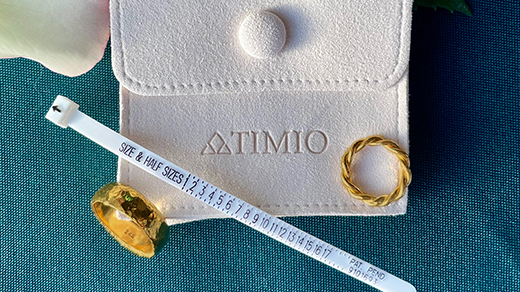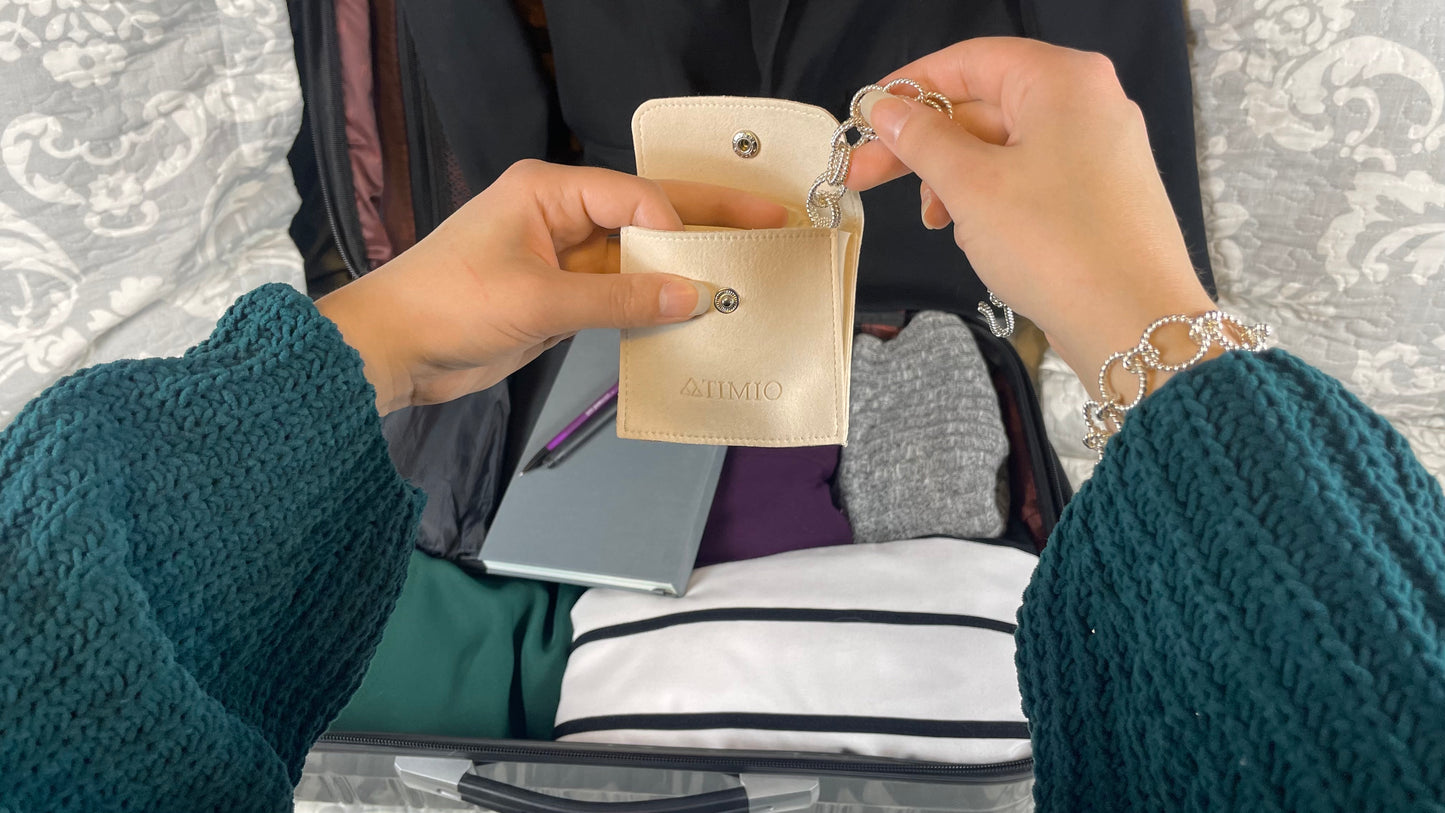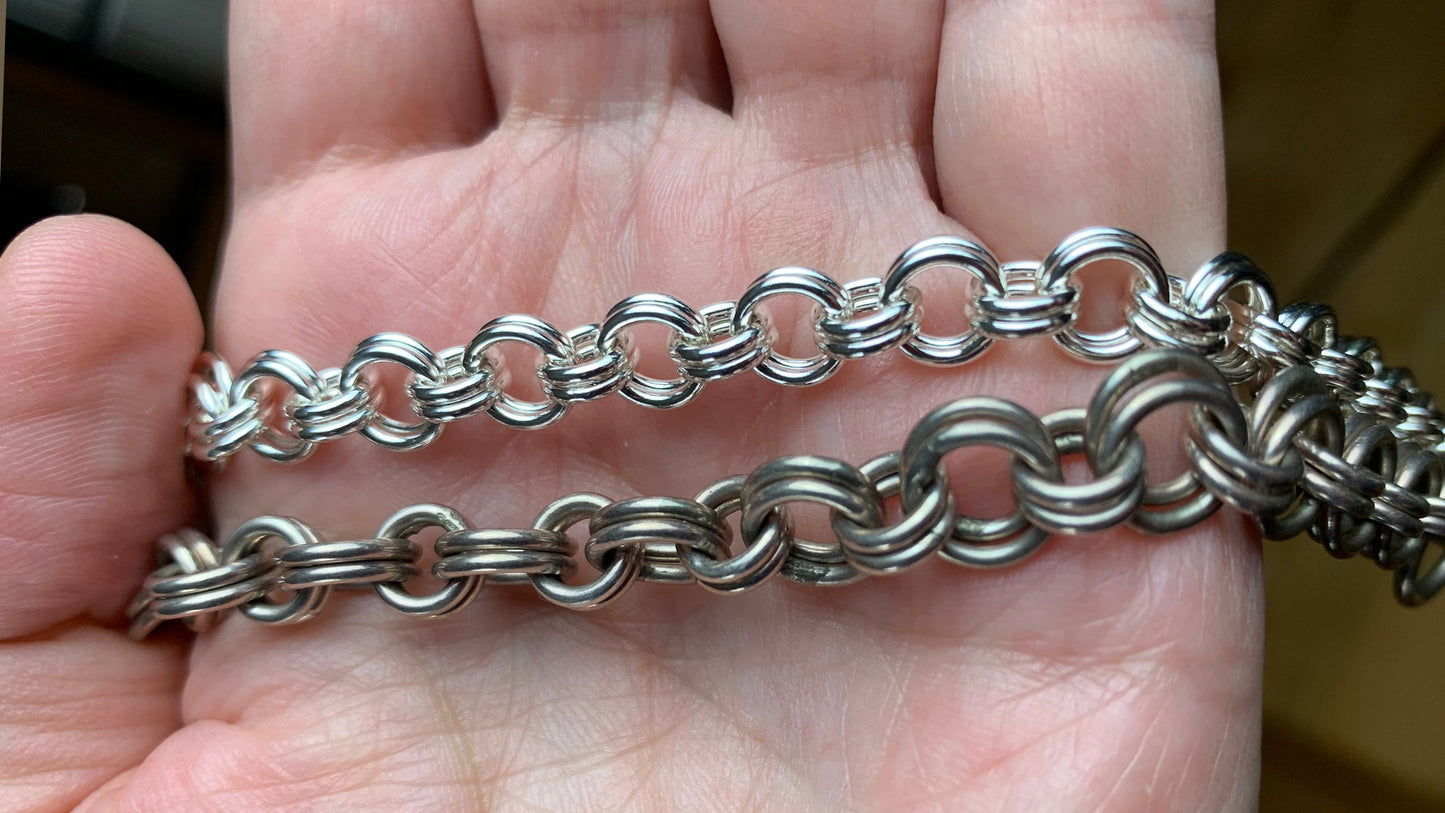
Jewelry industry terms are not always well-known or used by customers. This is totally understandable since there are also terms that customers are used to using in their search for new jewelry pieces that the industry doesn’t use. To help clear up customer confusion, we’ve compiled a list of terms (that will continue to grow) and explanations to leave everyone better informed.
"Alloy"
An alloy is a mixture of two or more metals. This technique is used mostly to increase the durability of the resulting metal mixture, or to conserve the more expensive precious metals. Merriam-Webster Dictionary's definition adds, " 3 a: an admixture that lessens value." This means pieces made of alloyed metals cost less to make, typically making them less expensive for customers, though this also means the don't command as high of prices on the secondary market.
“Antiqued”
This does not mean the jewelry is over 100 years old, which is the definition of “antique jewelry”. Antiqued pieces are treated with chemicals or painted to have a darker, more worn appearance which is also called a “patina”.
“Composite Gemstone”
These tend to be suspiciously inexpensive stones that typically claim to be precious stones such as diamonds, rubies, emeralds, sapphires, etcetera. These stones are pieces of gems assembled together, sometimes even including pieces of glass, and adhered together. These stones are designed to imitate other stones. A good and honest jeweler and jewelry store would clearly disclose the presence and use of composite gemstones, and if you’re looking at buying a piece that seems too good of a deal to be true it could be due to the use of composite, simulant, or lab-grown stones. There are institutions and laboratories that test and assess gemstones and diamonds to make sure they are identified correctly; and they issue reports containing all clarity notes, treatments to the gem, and more. If you question a stone’s identity, always ask clarifying questions and don’t be afraid to ask for reports supporting the seller’s claims.
“Gold Filled”
This is another term for a piece that is simply coated in a layer of gold or gold alloy. This coating must be thicker than coatings that make up at least 5% of the total weight making this finish thicker than the results from plating. There are stricter requirements that a piece must meet in order to be called “gold filled”.
“Gold Finish” or “Gold Overlay”
This is typically used to describe pieces that only have a thin outer coating of the precious metal. This is achieved by submerging the base layer metal (such as stainless steel, etc.) in a solution containing the desired precious metal and running an electric current through the solution to adhere the precious metal to the less expensive base metal. This process is called electro-plating.
“Green Gold”
A gold alloy containing a significant portion of silver which alters the alloy’s final color.
“Grey Gold”
A gold alloy containing a significant portion of iron which alters the alloy’s final color.
“Hand-Finished”
This means a bench jeweler assembled machine made pieces to construct the final piece. This method of construction does not meet the FTC’s definition of hand fabricated (aka handcrafted) jewelry, as most of the work is done by machines.
“Hand-Polished”
This is when a machine-made piece is polished by a bench jeweler instead of machine polished. The FTC clearly outlines the misuse of the phrase to imply that the piece is hand-fabricated when it is fact not, is illegal.
“Heirloom”
This is a loose term for a jewelry piece that has been passed down from one or more generation. Some companies distinguish that the jewelry must be at least 14K if gold, although this is not mentioned or supported in FTC guidelines.
“Hollow”
A construction method for jewelry that involves using tubes of precious metals, shaped into various link forms, and designed to look as though they contain more precious metal than they do. Sometimes these hollow links are filled with another material to support their structure, other times they remain hollow.
“Iced” or “Iced out”
Those seeking chains covered in diamonds will come across this phrase often. This is supposed to refer to chains mounted with diamonds, but some retailers are using this term to describe chains that use diamond simulants or Cubic Zirconia. Sometimes they nestle these critical clarifying details in a drop down description, so if you don’t actively search to make sure you’re getting what you’re expecting you won’t know until it’s too late.
“Natural”
This term is tricky when it comes to gemstones. A gemstone can be called natural when it formed without human intervention, aka not manufactured or produced artificially. The FTC clearly defines this in their “Guides for the Jewelry, Precious Metals, and Pewter Industries”. It is critical to understand that natural gemstones or diamonds are not “flawless” or of the highest clarity or quality. Some gemstones and diamonds undergo treatments to improve their clarity and/or color to make them more appealing. It’s important to ask if the gemstone(s) or diamond(s) in a piece have undergone any treatments. The FTC requires all treatments to be disclosed to buyers, but not all jewelry stores disclose treatments unless prompted. For example most emeralds on the market have undergone treatments to improve their color, clarity, or stability and it’s crucial you ask your jeweler if the piece you’re interested in, involves treated stones.
“Nickel Silver”
This is an alloy of metals that does not actually contain silver, but merely has a silver-reminiscent color. This alloy is usually a mixture of copper, zinc, and nickel.
“Pinchbeck Gold”
An alloy of copper and zinc used to simulate gold. Invented in 1720 by Christopher Pinchbeck. This alloy contains no gold, and the final appearance does not match the color of pure or alloyed gold. Another common gold simulant is brass.
“Real Gold”
This phrase is a strange trend among online jewelers describing their alloyed gold products. Gold is gold, a gold alloy contains gold. The only “fake gold” would be a gold simulant such as Pinchbeck Gold.
“Reinforced Gold”
Jewelry construction method where materials like stainless steel, wood, grains, sand, and similar materials are used to fill hollow gold links or pendants to aid in retaining the desired shape while using significantly less gold. At times companies will use this phrase to describe a silver or gold alloy which contains other metals for added strength.
“Rolled Gold”
This is an older plating process, patented in 1817, which involves applying a thin layer of gold or gold alloy to another base metal using heat-fusion or mechanical bonding.
“Rose Gold”
A gold alloy that contains copper which tints the resulting mixture red.
“Solid”
Typically this means that the construction of the piece (whether it incorporates links, beads, bands, or tubing) is of a consistent, uniform material. Although some less reputable online jewelry sellers have taken to saying “solid” for pieces that are plated or vermeil. While the construction of the piece isn’t hollow, it is still not wholly comprised of only the gold or gold alloy. Stating the piece is “solid” in the title without adding clarifying details in an easy-to-read location is deceptive. Always make sure to carefully read the product descriptions, company reviews, and company ethics policies before purchasing.
“Waterproof” or “Sweatproof”
Some jewelry pieces are anodized, which means they’re soaked in acid in an electric current tank. This causes oxygen atoms to bond to the surface and create a protective film. This film can shed off the pieces.
“White Gold”
A gold alloy made with nickel or on occasion palladium or zinc, resulting in a white or grey-white color.
“Vermeil”
This describes when a piece is comprised of a sterling silver base metal that has gold or gold alloy electro-plated onto its surface.
“Yellow Gold”
This phrase is typically used to describe gold alloys when other colors of gold alloys are available. Pure, 24K gold inherently has a rich, yellow color; therefore, to call 24K gold “yellow” is redundant.






